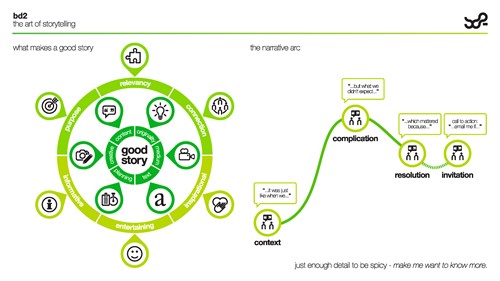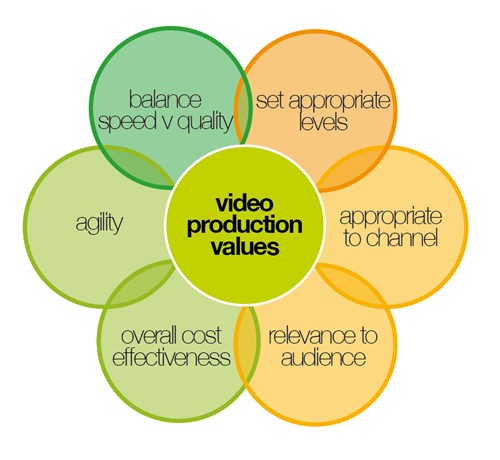We’re self-confessed advocates of the benefits of content marketing. We’ve written many blogs on both why we believe it works as well as plenty of advice on how to go about it and how to get the best results. With some B2B clients it’s actually not always that easy to convince them of these benefits especially when they (unbelievably) seem to have a marked lack of enthusiasm about what they do, or at least that anyone else would be that interested in it. In more than one workshop we’ve heard clients say ‘we just make thingummies... it’s a bit boring... what is there to say about it?’ But we find that once you discuss the benefits of thingummies, how they might combine with another product to contribute to making something bigger, or how their services enable their clients to do what they do, there’s always a good story. Then there’s generally interesting subject matter in their processes, or product innovation and expertise and there are people within the organisation who are enthusiastic about what they do so who are usually more than happy to talk about it.
There are also lots of news stories within a company ranging from a new appointment, a promotion, an investment in equipment or the guy in accounts who ran a 5K and raised hundreds of pounds for their charity. Finally, and most importantly, there are always (otherwise they wouldn’t be in business) plenty of happy customers most of whom are willing to explain why they choose to use the product or service. So when you get under the bonnet there’s always lots of interesting stories to underpin the content marketing drive, it’s just a case of identifying them, finding the best ways to capture them and then publishing them.
It has to be said that the marketing scoping process is always so much easier with a mission led organisation, so our recent workshop with the charity Families and Babies was something of a joy. Families And Babies, which is known as F.A.B, is a peer support service ran by mums for mums. Their mission is to protect, promote and support breastfeeding and improve health and well-being within families. F.A.B deliver accredited breastfeeding peer support training, working closely with Healthcare Professionals to ensure evidenced based information is given. We quickly unearthed a wealth of great stories that F.A.B can use to promote their services from the health benefits of breastfeeding through to success stories with mums who have initially struggled with breastfeeding but ultimately achieved success with F.A.B’s support.
Having identified the variety and depth of subject matter available to them to use within content marketing campaigns, it’s then a process of gathering, analysing, and synthesising information in order to provide valuable content for the potential and existing users of their services. A content marketing strategy should always start with research to figure out what the target audience wants and needs, which will make it much easier to identify the specific topics they care about. This means asking the audience for the content they want so it can help tailored to their needs. At the end of the day, your audience is the people who engage with what you create so it’s important that you understand and base your content marketing strategy on them. You can easily set up a survey using quick and cheap/free tools like surveymonkey, or ask them via social media channels like Facebook or give room for open-ended answers if in person.
Once the content for the stories have been identified and gathered, then it’s a case of actually producing them. With the written word a headline is one of the most important parts of writing an article. People can just gloss over it if there isn’t a fairly instant hook to grab attention - it’s important to try and stand out from the constant ‘noise’ of media, social media and advertising. Headlines should be succinct, and catchy, so they can easily get people’s attention on social media or on other online channels. A headline’s job is to be clear, concise, and direct. Don’t sacrifice clarity to sound witty and playful as it may hurt your article more than help it in the long run. And by combining a strong headline with an eye-catching image you’re providing another hook and giving the article a much greater chance of success. Think about the subject matter and what makes a good story then use the classic narrative arc - set the context, add a complication before explaining how you resolved it with just enough detail to make the reader want to know more by getting in touch.

But who reads the book when they can watch the movie? Video is one of the most powerful ways to tell stories online with far greater impact then still images and copy as it really brings the stories to life, especially emotive ones with real people talking about their experiences, but also informative ‘how to’ films. The stats speak for themselves with video now accounting for over 80% of all internet traffic, which is a 60% year on year increase, and the average time spent watching videos online is nearly 7 hours a week. Video is especially amenable to mobiles, as it’s often easier to watch a video than scroll through a web page and it’s very popular with younger audiences. ‘Millennials’ and ‘Gen Zers’ are ‘mobile first users who consume video through their devices rather than web pages and one of the main reasons for the 100% year on year increase in the consumption of video on mobile devices. Video is also very beneficial on social media where it will usually gain at least 10 times more likes and shares than an image.
But isn’t video expensive? It can be, of course, but even professional video production a lot cheaper than it used to be. Deciding whether to use video depends on the subject matter, the target audience, the channels it will be published on, the budget and immediacy, but video really brings stories to life with added authenticity. Video is very strong on social media, so specific edits should be created and again, to maximise the investment, publish many edits many times. We all have a video camera in our pockets which is amateur of course, but it is very usable, it’s instant and it’s free.

The key issue is choosing the appropriate production values for the purpose; hand-held mobile footage is fine for those quick testimonials ‘I’ve just been on a course, it was great...’ but sometimes higher production values might be more appropriate for an organisation’s ‘corporate’ video, or maybe a studio filmed ‘talking head’ piece with a midwife giving advice for example. The key factor to maximise the investment in video is to create engaging content along with various edits for different channels including social media, and to build up a library of footage to re-use.
In order to create the best content that your audience will keep coming back for, you should publish content that is relevant to them, that’s engaging either because it’s informative, amusing, original, emotive or a combination of some or all of these. Make sure that your efforts are worth it in terms of a return on investment in relation to your marketing goals so remember to monitor and evaluate any metrics. Be sure to promote what you publish by using keywords and phrases that will be most searched. It’s important, not just because these keywords help bring more traffic but also because they can show how knowledgeable you are about users’ needs. Stay on top of trends and hot topics as these are what people are interested in now but always stay true to your core values, good content is always authentic.

